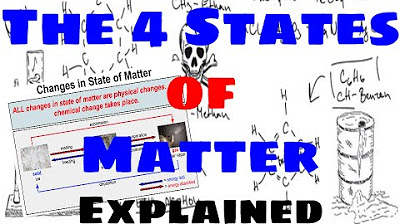Incidence of Taxation - How to Graph It
Summary
TLDRIn this educational video, Mr. Peter explores the concept of tax incidence, explaining how the burden of an excise tax is shared between consumers and producers. He uses diagrams to illustrate how the imposition of a per-unit tax shifts the supply curve and affects market price and quantity. The video delves into how tax burden distribution is influenced by the elasticity of supply and demand, showing that inelastic demand leads to consumers bearing more of the tax burden, while elastic supply results in producers bearing more. The analysis includes the impact of taxation on total revenue, efficiency loss, and deadweight loss, providing a comprehensive understanding of tax incidence in various economic scenarios.
Takeaways
- 📚 The concept of 'incidents of taxation' refers to the burden of taxation, indicating how much of a tax is paid by consumers and how much by producers.
- 💼 In most cases, producers collect the tax and then pass the proceeds onto the government, which often results in a shift of the supply curve due to the tax imposition.
- 📉 The market quantity typically decreases after a per-unit tax is imposed, reflecting a reduction in the quantity demanded and supplied at the new market price.
- 💸 The tax burden is shared between consumers and producers, with the exact division depending on the relative elasticities of supply and demand.
- 🟥 In scenarios with inelastic demand, consumers bear a larger share of the tax burden because they are less responsive to price changes.
- 🟦 With elastic demand, producers bear more of the tax burden as consumers can more easily adjust their purchasing behavior in response to price increases.
- 🔄 The incidence of taxation is inversely related to the elasticity of supply; with inelastic supply, producers bear more of the tax burden, while with elastic supply, consumers bear more.
- 📊 The diagrammatic analysis shows that the tax burden (incidence of taxation) can be visualized as areas on a graph, with different shapes indicating the burden on consumers and producers.
- 💰 The imposition of a tax generally leads to a decrease in total revenue for the firm, as sales volume drops and the producer's net price per unit is reduced.
- ⏺ The video concludes with the importance of understanding how elasticity impacts the incidence of taxation, with different outcomes depending on whether demand or supply is more elastic.
Q & A
What is meant by the 'incidence of taxation'?
-The incidence of taxation refers to the burden of taxation, specifically how much of a tax is paid by consumers and how much is paid by producers.
How does a per unit tax affect the supply curve?
-A per unit tax causes the supply curve to shift upwards by the vertical distance of the tax, increasing the price of each unit sold.
What happens to market price and quantity when a per unit tax is imposed?
-The imposition of a per unit tax results in a new market price (higher) and a new market quantity (lower) due to the increased cost passed on to consumers and producers.
How is the tax burden shared between producers and consumers?
-The tax burden is shared between producers and consumers, with each bearing a portion of the tax depending on the elasticity of supply and demand. Neither party usually bears the full tax burden unless there is perfect elasticity or inelasticity.
What is the significance of the vertical distance between the supply curve and the new supply curve (S + tax)?
-The vertical distance between the supply curve and the new supply curve (S + tax) represents the per unit amount of the tax.
How does inelastic demand affect the tax burden?
-With inelastic demand, consumers bear most of the tax burden because they cannot easily change their buying behavior in response to price increases.
What happens to producer revenue after a per unit tax is imposed?
-Producer revenue typically decreases after a per unit tax is imposed, as both the market price and quantity sold are affected by the tax, resulting in a smaller revenue box.
What is deadweight loss in the context of taxation?
-Deadweight loss refers to the loss of efficiency in the market due to the tax, as it reduces consumer surplus and producer surplus, creating an overall loss for society.
How does elastic demand impact the distribution of the tax burden?
-With elastic demand, producers bear more of the tax burden because consumers are more sensitive to price changes and can reduce their consumption or switch to substitutes.
What is the relationship between tax incidence and elasticity?
-The incidence of taxation is closely related to elasticity. If demand or supply is inelastic, the tax burden falls more on consumers or producers, respectively. Conversely, if demand or supply is elastic, the tax burden shifts more to the other party.
Outlines

Cette section est réservée aux utilisateurs payants. Améliorez votre compte pour accéder à cette section.
Améliorer maintenantMindmap

Cette section est réservée aux utilisateurs payants. Améliorez votre compte pour accéder à cette section.
Améliorer maintenantKeywords

Cette section est réservée aux utilisateurs payants. Améliorez votre compte pour accéder à cette section.
Améliorer maintenantHighlights

Cette section est réservée aux utilisateurs payants. Améliorez votre compte pour accéder à cette section.
Améliorer maintenantTranscripts

Cette section est réservée aux utilisateurs payants. Améliorez votre compte pour accéder à cette section.
Améliorer maintenantVoir Plus de Vidéos Connexes

The Four States of Matter - Explained

Lab Equipment - Explained

3. Gr 11 Life Sciences - Population Ecology - Theory 3 Mark Recapture Method

4. Gr 11 Life Sciences - Population Ecology - Worksheet 1

PENJASKES KELAS X - SOFTBALL

Introduction to Culture [AP Human Geography Review Unit 3 Topic 1]

Menentukan Mr ( massa molekul relatif )
5.0 / 5 (0 votes)
